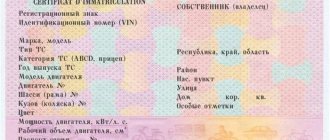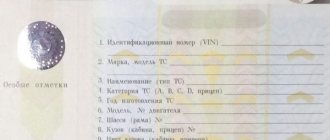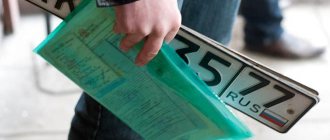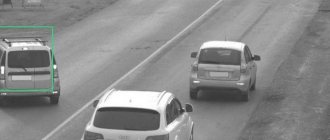Many vehicle owners, planning to sell their car, are wondering whether it is necessary to deregister the car for sale in 2021, because several years ago it was impossible to sell the car otherwise.
Since 2013, new rules have been in force that eliminated the need to deregister a car before selling it. However, according to the same rules, the former owner, after 10 days, has the right to terminate the registration of the car after the sale without any participation from the new owner. How to deregister a car to the former owner and in what cases this is necessary, we will try to figure it out in this article.
What is the difference between termination of registration and deregistration?
First, a little history:
Before July 10, 2021, the concepts of termination of registration and deregistration were different.
From July 10, 2021 to December 31, 2021, the concepts meant the same thing.
From January 1, 2021, each of the concepts again received its own meaning.
Let's consider Article 10 of the Federal Law “On State Registration of Vehicles”:
4. Registration actions include: ... 3) termination of state registration of a vehicle - inclusion in the appropriate entry of the state register of vehicles of information about the temporary termination of the vehicle’s admission to participation in road traffic;
4) renewal of state registration of a vehicle - cancellation of a previously made decision to terminate state registration of a vehicle;
5) removal of a vehicle from state registration - transfer of a vehicle record to the archive of the state register of vehicles;
6) restoration of state registration of a vehicle - cancellation of the transfer of a vehicle record to the archive of the state register of vehicles if actions to remove a vehicle from state registration are recognized as illegal or unfounded;
From this point we can draw the following conclusions:
- termination of registration is a temporary procedure;
- deregistration is a final procedure.
In fact, if you look at the situation through the eyes of a simple driver, you won’t notice much of a difference between these concepts. In both cases, the car cannot be used.
The law also contains opposite concepts:
- resumption of accounting is the reverse operation for stopping accounting;
- accounting restoration is the reverse operation for deregistration.
All of the procedures listed below are discussed in more detail.
Help from specialists
Contact our company to deregister your car with the traffic police as quickly as possible and without queues! We offer professional assistance at affordable prices. Our specialists will advise and help you properly prepare for the procedure, make an appointment in advance at the nearest department convenient for you, meet you and go through the procedure for you, spending less than an hour.
We work with individuals and legal entities, we guarantee the correct and legal completion of the procedure in a short time, and the absence of fines and claims from the traffic police. We carefully monitor innovations, study current requirements and rules, and comply with current laws.
Our advantages:
- Team of experienced specialists
- Affordable prices and no prepayment
- Short deadlines for completing the procedure
- No queues at MREO
- Registration for the near future
- Consultations and assistance in preparing documents
To complete the procedure as quickly as possible, leave a request online or by phone, consult with our representative and make an appointment at a suitable department. For details, contact specialists by calling the number listed on the website.
In what cases is it possible to terminate registration?
Let's consider Article 18 of the Federal Law “On State Registration of Vehicles”:
1. State registration of a vehicle is terminated:
1) at the request of the owner of the vehicle;
2) at the request of the previous owner of the vehicle if the new owner of the vehicle has not applied to the registration department within ten days from the date of its acquisition to make appropriate changes to the registration data of the vehicle;
3) if there is information about the death of the owner of the vehicle;
4) if there is information about the liquidation of a legal entity that is the owner of a vehicle, or about the termination of activities by an individual who is the owner of a vehicle as an individual entrepreneur;
5) if there is information about the termination of guardianship (trusteeship) over the owner of the vehicle, and in relation to a vehicle owned by one of the parents or adoptive parent of a person under the age of sixteen who is the owner of the vehicle - when the owner of the vehicle reaches the age of sixteen years old;
6) if the vehicle is registered with the state on the basis of documents subsequently recognized as counterfeit (forged) or invalid, as well as when the grounds specified in Part 1 of Article 20 of this Federal Law are identified - in the manner and on the conditions determined by the Government of the Russian Federation Federations;
7) due to the expiration of the state registration of the vehicle.
At the request of the car owner
If the car owner wants to stop registering the car, he can do so. In 2021, there is no need to look for special reasons and justifications for this. For example, registration can be terminated in the following cases:
- if the car is not in use and the person does not want to pay transport tax for it;
- if the car is lost;
- if the car is stolen;
- if a person wants to keep the license plates of the car, and sell the car itself without license plates.
10 days after selling the car
If the car is sold, and the new owner has not registered it, then the previous owner can, on his own initiative, terminate the registration.
Termination of registration after sale
On the initiative of the traffic police
Without the participation of the car owner, registration may be terminated in the following cases:
- if information has been received about the death of the owner of the car (Article 18, Part 1, Clause 3);
- if information has been received about the liquidation of a legal entity or individual entrepreneur (Article 18, Part 1, Clause 4);
- upon termination of guardianship or trusteeship of the owner of the car (Article 18, Part 1, Clause 5);
- when the owner of the car reaches the age of 16 years (Article 18, Part 1, Clause 5);
- if the documents on the basis of which the car is registered are found to be counterfeit or invalid (Article 18, Part 1, Clause 6);
- in the absence of an engine number or body number (Article 20, Part 1, Clause 1);
- when replacing a car engine without making changes to the registration documents (Article 20, Part 1, Clause 2);
- when making changes to the design without approval from the traffic police (Article 20, part 1, clause 4);
- if the car or its engine is wanted (Article 20, Part 1, Clause 5);
- if the temporary registration period has expired (Article 18, Part 1, Clause 7).
Restoration of a traffic police record by the owner
The motorist considered it necessary to stop registering his vehicle. For example, after an accident the car was severely damaged, and in order to avoid paying taxes, he decided on such a procedure. After repairs, the pressing question arises: how to register a car if registration has been terminated?
The reinstatement process begins once the proper application is submitted. It can be filled out at the traffic police department, or it can be issued on the State Services portal.
The owner can restore the entry in the traffic police database only if the car is available and in good condition.
Restoration will no longer be free; the procedure is subject to a fee:
- new license plates – 2 thousand rubles;
- make changes to the PTS – 350 rubles;
- get a new STS – 500 rubles.
You can restore your registration at any traffic police department at your place of residence.
And you can also return the old license plates and technical equipment passport if the owner needs it. How to register a car with the owner if it has been deregistered, step by step:
- Preparation of necessary documents. The mandatory list includes: an application from the owner, a passport, PTS and STS of the car (if available), and an MTPL insurance policy. Depending on the reason why registration was terminated, additional documents are attached. Copies must be certified by a notary.
- After checking the documentation, the inspector invites you to inspect the car. Identification numbers must correspond to the numbers indicated in the papers. All necessary structures must be available, and the technical condition is fully operational. Then the inspector draws up a conclusion, which is attached to the main package of documents.
- Within an hour, the inspector makes his decision. Upon approval of the restoration, documents confirming the corresponding registration and state license plates are issued.
In general, the procedure is quite simple. The owner can easily figure out how to register a car if registration has been terminated.
But what should the buyer do? What to do if the previous owner deregistered the car, and the new owner needs to register it in his name?
What documents are needed to terminate registration?
The list of documents required to terminate registration depends on the reason for which the vehicle registration is terminated.
According to the current owner
Let's consider paragraph 56 of the Vehicle Registration Rules, paragraphs 132 and 27 of the Traffic Police Administrative Regulations for vehicle registration:
56. Termination of state registration of a vehicle at the request of the vehicle owner is carried out by the registration department on the basis of an application for registration action submitted by the owner of the vehicle or his representative.
132. Termination of state registration of a vehicle in accordance with clause 56 of the Rules is carried out by the registration department on the basis of documents established by sub-clauses 27.1 - 27.3 of clause 27 of the Administrative Regulations. In this case, the administrative procedures provided for in subparagraphs 61.1, 61.2, 61.4 and 61.7 of paragraph 61 of the Administrative Regulations are carried out.
27. To receive public services, applicants submit documents provided for in Article 15 of the Federal Law:
27.1. Application from the vehicle owner to complete registration actions.
27.2. A document certifying the identity of an individual who is the owner of a vehicle, and in the case of an application from a representative of the owner of the vehicle - also a document certifying the identity of the representative of the owner of the vehicle and a document confirming his authority.
27.3. Documents identifying the vehicle (vehicle chassis):
That is, upon termination of registration at the request of the current owner, the traffic police will require:
- statement (discussed below);
- passport of the car owner;
- PTS and vehicle registration certificate.
According to the previous owner
Let's consider paragraph 57 of the Vehicle Registration Rules and paragraph 133 of the Administrative Regulations of the State Traffic Safety Inspectorate for vehicle registration:
57. Termination of state registration of a vehicle in the event of its alienation is carried out by the registration department on the basis of an application from the previous owner of the vehicle and the presentation by him of documents on the conclusion of a transaction aimed at alienating the vehicle, provided that there is no confirmation of the registration of the vehicle with the new owner.
133. Termination of state registration of a vehicle in accordance with paragraph 57 of the Rules is carried out by the registration department on the basis of the documents established by subparagraphs 27.1 - 27.3 of paragraph 27 of the Administrative Regulations, an application from its previous owner and the presentation by him of documents on the conclusion of a transaction aimed at alienating the vehicle, in the absence of confirmation registration of the vehicle for the new owner. In this case, the administrative procedures provided for in subparagraphs 61.1, 61.2, 61.4 and 61.7 of paragraph 61 of the Administrative Regulations are carried out.
In this case, the traffic police requires the following documents:
- statement (discussed below);
- passport of the car owner;
- contract for the sale of a car.
Note. The regulations on vehicle registration also talk about what needs to be provided to the traffic police with a PTS and a registration certificate. However, these documents are transferred to the new owner along with the car, so you won’t be able to take them with you in any case.
On the initiative of the traffic police
In this case, no documents are provided to the traffic police; department employees make the decision to terminate registration on their own.
Who has the right to this?
If a car has been deregistered with the State Traffic Safety Inspectorate for one reason or another, the following persons can re-register it:
- Buyer - if the car was registered at the request of the seller.
- Owner - if the car was stolen or sent for recycling.
- Representative of the owner, acting on the basis of a power of attorney. This is practiced if the owner of the car himself cannot personally visit the traffic police MREO. In the same case, if the car was purchased by an organization, a representative office is generally the only option for registration actions. Read more about the nuances of registering a vehicle without the participation of the owner here.
Important. If a citizen does not have a document confirming his identity, as well as a power of attorney confirming his authority, no registration actions are possible. Even with the owner’s passport in hand, but without a power of attorney, the MREO will not register the car and will not accept the application.
Next, we will tell you how to re-register a car if it has been cancelled.
What happens when registration is terminated?
In general, termination of registration looks like this:
- The car owner contacts the traffic police with the above documents and car numbers.
- The traffic police takes and destroys the vehicle title and registration certificate (clause 61 of the registration rules).
- If the car owner did not indicate in the application that he wants to keep the plates, then the plates are also confiscated (clause 61 of the registration rules).
- A mark is placed in the database indicating that the registration of the car has been terminated (clause 55 of the registration rules).
There is no need to present the car itself to the traffic police.
Attention! If you subsequently decide to renew your registration (discussed below), you will need at least one registration document.
That is, first the rules say that the registration document is destroyed when registration is terminated, and then that the same registration document is needed to restore registration. This is a flaw in the regulatory document that can cause problems in practice.
In this regard, it makes sense to “lose” the PTS before contacting the traffic police and submit only the registration certificate for destruction. And the PTS will be used in the future to identify the car.
Advice for those who have not yet bought such a vehicle
Is it possible to buy a car that is not registered? Yes, but if the acquisition has not yet taken place, the buyer should:
- Check the status of the car. If the car’s registration was terminated due to theft, you must refrain from purchasing it in any case.
- Request a discount from the seller. There is a possibility that the buyer will also need to pay tax during registration for the time the car was not registered. Therefore, the price for such a car should be less than for a regular one.
- Consider who exactly is selling the car. If the owner, for some reason, has ceased to register the vehicle, such a transaction will be absolutely legal. If the seller is a reseller who has not registered the car in his name, such an agreement will be illegal and “problematic”.
How to renew a terminated registration?
Let's consider paragraphs 62 and 67 of the Vehicle Registration Rules:
62. Renewal of the state registration of a vehicle is carried out by making an entry in the state register of vehicles by the registration department about the renewal of the vehicle’s admission to participation in road traffic.
67. Renewal of state registration of a vehicle is carried out by the registration department at the place of application of the vehicle owner with the issuance of a new registration document and vehicle passport (in the absence of an electronic passport).
Renewal of state registration of a vehicle, except for the cases provided for in paragraph 68 of these Rules, is carried out with the assignment of a state registration number.
When renewing registration, the traffic police enters information into the database, and also issues the driver a new registration certificate, vehicle passport and assigns registration plates (numbers). The number does not have to be new; you can also assign a number from storage.
But for issuing a registration certificate and PTS you will have to pay state fees: 800 and 500 rubles .
Note. If the registration was terminated erroneously or illegally, it is renewed without paying fees, without providing documents and without inspecting the vehicle. However, to do this, you need to contact exactly the unit whose employees stopped registering (clause 68 of the registration rules).
In other cases, the choice of registration renewal option depends on the reason for which the registration was terminated. In addition, if a car whose registration has been terminated is sold or donated to another owner, then the procedure for renewing registration will also have some features.
If registration is terminated at the request of the owner
Let's consider clause 63 of the Registration Rules:
63. Resumption of state registration of a vehicle terminated in accordance with paragraph 56 of these Rules in the absence of a transfer of ownership of it is carried out by the owner of the vehicle, information about which is contained in the state register of vehicles, when the owner of the vehicle or his representative submits an application for registration actions, a document identifying the vehicle, a document confirming payment of the state duty, a document certifying the identity of the person applying, and in the case of an application not on one’s own behalf, also a document confirming his authority.
If the car remained with the previous owner (was not sold), then the following documents will be required to renew registration:
- statement (discussed below);
- receipts for payment of state fees;
- car owner's passport;
- registration certificate or PTS.
Once again, note the ambiguity of the situation. When registration is terminated, the rules require you to hand over the STS and PTS to the traffic police, and when renewed, they require you to provide these documents. In this regard, before terminating registration, it makes sense to “lose” the title.
If you stopped registering earlier and submitted all documents to the traffic police, then take copies of them with you. If you haven’t even saved copies, then simply contact the traffic police without identifying documents.
Since the owner of the car has not changed, there is no need to present the car to the traffic police for inspection .
Resumption of state registration of a vehicle terminated in accordance with paragraph 56 of these Rules, in the event of a transfer of ownership of it or a change in the owner of the vehicle, is carried out by the new owner of the vehicle. In addition to the documents specified in paragraph one of this paragraph, documents confirming ownership of the vehicle and an insurance policy for compulsory civil liability insurance of vehicle owners are presented, and the vehicle is also inspected.
If the car, the registration of which was terminated upon application, is sold or donated to another owner , then the list of documents for return will be slightly different:
- statement (discussed below);
- receipts for payment of state fees;
- car owner's passport;
- registration certificate or PTS;
- purchase and sale agreement or gift agreement;
- OSAGO insurance.
In addition, when changing ownership, the vehicle must be inspected by the traffic police.
If registration is terminated by the previous owner after sale
Clause 64 of the registration rules:
64. Resumption of state registration of a vehicle terminated in accordance with paragraphs 57 and 58 of these Rules is carried out by the new owner of the vehicle in the manner prescribed by paragraph two of paragraph 63 of these Rules.
Required documents:
- statement (discussed below);
- receipts for payment of state fees;
- car owner's passport;
- registration certificate or PTS;
- purchase and sale agreement or gift agreement;
- OSAGO insurance.
Vehicle inspection required.
If registration is terminated after the death of the previous owner
In this case, it will be possible to restore registration only after the inheritance procedure is completed:
Registration of a car by inheritance
Required documents:
- statement (discussed below);
- receipts for payment of state fees;
- car owner's passport;
- registration certificate or PTS;
- certificate of inheritance;
- OSAGO insurance.
Vehicle inspection required.
Clause 67 of the Registration Rules:
When resuming the state registration of a vehicle, the registration of which was terminated due to the death of the owner of the vehicle in accordance with paragraph 58 of these Rules, in the presence of the will of the new owner, state registration plates recognized as invalid in accordance with paragraph 61 of these Rules and entered by the registration department into the relevant search records records of lost special products of the State Traffic Inspectorate are excluded from the list of wanted ones and are retained for the vehicle.
When entering into an inheritance, the heir has the right to keep the car's license plates . However, this can only be done if the region code on the number corresponds to the place of registration of the heir.
If registration is terminated upon liquidation of a legal entity or individual entrepreneur
This section discusses cases when registration is terminated:
- upon liquidation of a legal entity;
- upon termination of the activities of the individual entrepreneur.
To restore in this case you will need:
- statement (discussed below);
- receipts for payment of state fees;
- car owner's passport;
- registration certificate or PTS;
- car purchase and sale agreement or other document confirming the change of owner;
- OSAGO insurance.
The car must be inspected by the traffic police.
If registration is terminated due to termination of guardianship or trusteeship
Clause 64 of the Registration Rules:
Renewal of the state registration of a vehicle, terminated in the presence of information about the termination of guardianship (trusteeship) over the owner of the vehicle, is carried out for the owner of the vehicle, information about which is contained in the state register of vehicles, in the manner prescribed by paragraph one of paragraph 63 of these Rules, with vehicle inspection.
Required documents:
- statement (discussed below);
- receipts for payment of state fees;
- car owner's passport;
- registration certificate or PTS.
The car must be submitted to the traffic police for inspection.
If registration is terminated due to the fact that the documents are found to be counterfeit or inconsistencies in the design of the vehicle are identified
This section deals with the following reasons for termination of registration:
- if the documents on the basis of which the car is registered are found to be counterfeit or invalid;
- if the engine number or body number is missing;
- if the engine is replaced without making changes to the registration documents;
- if changes are made to the design of the car without approval from the traffic police
65. Resumption of state registration of a vehicle terminated in accordance with paragraph 59 of these Rules is carried out after eliminating the reasons that were the basis for termination of registration, for the owner of the vehicle, information about which is contained in the state register of vehicles, in the manner prescribed by paragraph one of paragraph 63 of these Rules, with an inspection of the vehicle.
To restore registration in this case, you must first eliminate the reason for the termination of registration. For example, instead of documents that were previously recognized as fake or forged, provide new documents to the traffic police. Or obtain a certificate of compliance of the vehicle with changes made to its design with safety requirements, in the event of a design change.
In addition, the car owner will need:
- statement (discussed below);
- receipts for payment of state fees;
- car owner's passport;
- registration certificate or PTS.
In this case, an inspection of the car is not necessary.
If registration is terminated due to the expiration of the temporary registration period
This section deals with the situation when the temporary registration of a car has expired and it was terminated automatically. This also applies to the case when the owner of the car has reached the age of 16 years.
Clause 66 of the registration rules:
66. Resumption of state registration of a vehicle terminated in accordance with paragraph 60 of these Rules, in the absence of a transfer of ownership of it, is carried out by the owner of the vehicle, information about which is contained in the state register of vehicles, in the manner prescribed by paragraph one of paragraph 63 of these Rules, and for vehicles whose state registration was terminated due to the expiration of the state registration period, additional documents are submitted that establish the grounds for extending the registration period.
Documents for renewal of registration if the owner of the car has not changed :
- statement (discussed below);
- receipts for payment of state fees;
- car owner's passport;
- registration certificate or PTS;
- a document establishing the grounds for extending the registration period.
A vehicle inspection by the traffic police is not required.
Resumption of state registration of a vehicle terminated in accordance with paragraph 60 of these Rules, in the event of a transfer of ownership of it or a change in the owner of the vehicle, is carried out by the new owner of the vehicle in the manner prescribed by paragraph two of paragraph 63 of these Rules.
If in a similar situation the car was sold, that is, the owner has changed , then the list of documents becomes like this:
- statement (discussed below);
- receipts for payment of state fees;
- car owner's passport;
- registration certificate or PTS;
- purchase and sale agreement or gift agreement;
- OSAGO insurance.
The car should be presented to the traffic police for inspection.
Can a fine come after deregistration of a vehicle?
After receiving the service, information about the owner of the vehicle is updated in the database. The process takes some time, so the previous owner of the vehicle may receive a fine for violations of another motorist, even if the car has already been re-registered. In this case, you must contact the traffic police within 10 days after receiving the notification of the fine and appeal it.
Important! The contact details of the police department and the officer who issued the fine are indicated in the resolution. By calling the specified number, you need to clarify the details of the head of the site and draw up an application to appeal the fine in his name. It is recommended that you attach a copy of the purchase and sale agreement to your application.
In what cases is deregistration possible?
Let's move on to the second operation - deregistering the car.
Let's consider Article 19 of the Federal Law “On State Registration of Vehicles”:
1. The following vehicles are subject to removal from state registration:
1) exported outside the territory of the Russian Federation for alienation in connection with the transfer of ownership of this vehicle to a foreign individual or legal entity;
2) at the request of the owner of the vehicle or an organization authorized in the manner established by the Government of the Russian Federation, after disposal of the vehicle;
3) whose state registration was terminated on the grounds specified in paragraph 7 of part 1 of Article 18 of this Federal Law, and was not renewed after one year.
There are only 3 reasons for deregistering a car:
- export outside the Russian Federation by a foreigner or a foreign legal entity;
- after recycling the car;
- if within a year after the termination of the temporary registration the car owner has not renewed it (happens automatically).
Preparation for the procedure
If you have sold a vehicle, but are not sure that the new owner will meet the re-registration deadlines established by law, check the status of the car. This must be done on the 11th day after signing the purchase and sale agreement, since the new owner must change the registration data within 10 days.
To check, use the official website of the State Traffic Inspectorate. If the vehicle is registered in Moscow or the Moscow region, you can obtain the necessary information on the Autocode online service. On the website you need to indicate the VIN code, body number or chassis number.
The previous owner has the right to deregister the vehicle if the new owner violates the re-registration deadlines. To do this, you should contact the nearest MREO and submit the appropriate application. It’s even easier to do this online using the State Services portal.
Important! The citizen's registration does not matter. You can receive the service in any area, since the automated database in Russia is uniform.
If the vehicle is exported outside the country, a government fee must be paid before submitting the application.
What documents are needed to deregister a car?
When taking a car abroad
Let's consider clause 70 of the Vehicle Registration Rules:
70. Removal from state registration of a vehicle exported outside the territory of the Russian Federation for alienation in connection with the transfer of ownership of this vehicle to a foreign individual or legal entity not registered in the Russian Federation is carried out by the registration department on the basis of applications from these persons and purchase and sale agreements , donation or other documents provided for by the legislation of the Russian Federation, certifying their ownership of this vehicle.
For a vehicle removed from state registration and exported outside the Russian Federation, a vehicle registration certificate with a mark on deregistration and a state registration plate “TRANSIT” are issued, the validity of which is 30 days. The vehicle passport (if available) is submitted to the registration department.
Please note that in this case we are talking about the fact that before being exported abroad, the car became the property of a foreigner or a foreign legal entity. If the owner of the car is registered in Russia, then he cannot deregister the car. He can only terminate registration upon application, and it is better to do this after the car has left the territory of Russia.
As for a foreigner, to deregister he will need the following documents:
- statement (discussed below);
- purchase and sale agreement, gift or other agreement certifying ownership;
- vehicle passport - PTS.
When deregistered for export abroad, the car must be inspected by the State Traffic Safety Inspectorate (clause 146 of the registration regulations), and after deregistration, a registration certificate and transit numbers (for 30 days) must be issued to it.
When disposing of a car
Let's consider clause 71 of the registration rules and clause 147 of the registration regulations:
71. Removal from state registration of a vehicle after disposal upon application for registration actions by the owner of the vehicle or an organization authorized to dispose of vehicles is carried out by the registration department upon presentation of a certificate (act) of disposal confirming the fact of destruction of the vehicle.
147. Removal of a vehicle from state registration in accordance with paragraph 71 of the Rules is carried out on the basis of documents provided for in subparagraphs 27.1 - 27.3 of paragraph 27 of the Administrative Regulations and provided for in subparagraph 27.4.7 of paragraph 27 of the Administrative Regulations, a certificate (act) of disposal confirming the fact of destruction of the vehicle. In this case, the administrative procedures provided for in subparagraphs 61.1 - 61.2, 61.4 and 61.7 of paragraph 61 of the Administrative Regulations are carried out.
To deregister after disposal, the car owner will need:
- statement (discussed below);
- passport of the car owner;
- PTS and vehicle registration certificate;
- certificate of disposal.
Please note that a car can be deregistered only after the car has actually been disposed of. That is, first the car is destroyed, and only then its owner receives a certificate and applies to the traffic police with it. In addition, it is impossible to re-register a car that has been deregistered after disposal.
Car recycling
Peculiarities
After loss or theft
If the car was lost or stolen, the restoration of the vehicle registration after its termination must be carried out by the same person who was previously listed as the owner of the vehicle according to the documents. It is impossible to sell a stolen or lost car , so the previous owner must act. The maximum that is allowed by law is representation by proxy.
How to restore a car's registration after it has been canceled due to theft? The procedure will be standard:
- A package of documents required for registration is collected for the found car.
- State duty is paid.
- Applications and documents are submitted to the State Traffic Safety Inspectorate.
- The car is presented to the traffic police for inspection.
The only, but significant difference with the usual registration procedure is that you can only contact the MREO where the car was previously registered (clause 52 of Order No. 399 of the Ministry of Internal Affairs of the Russian Federation of 2021). In the event that the car was stolen and the thieves had already managed to delve into it (for example, by changing the license plates), an additional forensic examination and a resolution of the inquiry or investigative body in this case will be required.
In addition, in especially difficult cases, a court decision may be additionally required, which will establish the identity of the stolen and found car. This procedure itself is very complicated, which is why many owners of stolen cars do not contact the police to initiate a criminal case, but put the car on the wanted list of the traffic police. In this case, the expert’s opinion on the identification of the car will be sufficient to restore it to the register.
Through the court
When the usual registration steps cannot be carried out, the owner of the car can get it registered with the help of the court. This is possible, for example, if for some reason the traffic police MREO refuses to register the car.
The procedure for judicial restoration of a vehicle’s registration will look like this:
- The owner applies to the traffic police to register the car and receives a written refusal.
- A claim is drawn up in accordance with the procedure established by procedural legislation. In the statement of claim, the owner indicates for what reasons the car should be registered, which expresses the illegality of the actions of the traffic police MREO employees and demands that they be obliged to register the car.
- The claim is filed in court at the location of the traffic police department where the registration refusal was received.
- After the trial is completed and the case is won, the owner again turns to the traffic police, where, along with other documents, he presents a court decision on his case, which has entered into legal force.
- The car is registered, since legal judicial acts are mandatory.
The judicial option of registration requires both more time (at least a month to consider the case - depending on the workload of the court and the time it took to carry out legal actions), and a solid justification from the point of view of the law why the car should be registered and the actions traffic police officers are illegal. If there is no such justification, the case will be lost.
How to restore vehicle registration?
73. Restoration of the state registration of a vehicle in the event of recognition of actions related to the removal of a vehicle from state registration as illegal or unfounded is carried out by the registration department that removed the vehicle from state registration, without submitting documents, collecting a state fee and conducting an inspection of the vehicle.
It is possible to restore a car's registration only in one case - if deregistration is declared illegal. In other cases, it is impossible to restore the account. However, this does not mean that a deregistered vehicle will not be able to be used in the future.
If a car is deregistered for export from the territory of the Russian Federation or 1 year after the end of the temporary registration period (automatically), then the car owner can simply re-register it (by analogy with a new car).
Registering a car with the traffic police
If a car is deregistered after disposal, then it is impossible to either restore its registration or re-register it (Federal Law “On Vehicle Registration”, Article 20, Part 1, Clause 3).
What duties do you need to pay?
The service is free. State duty is paid only in one case - when transport is exported to another country for sale. To do this, you need to obtain transit numbers and a new registration certificate.
Fees:
- GRZ “transit” – 1600 rubles
- New STS – 500 rubles
The fee is paid at the branch cash desk or through a payment terminal. Users of the State Services service can pay the state fee online and receive a 30% discount.
How to deregister a car sold by proxy?
The sale of a vehicle is carried out under a purchase and sale agreement. But there are often situations when a transaction is carried out by proxy. If the new owner conscientiously registers his acquisition, then no problems arise. But what should the previous owner do if, after several months, he still continues to receive receipts with transport tax and fines?
Experts recommend trying to find contacts of the new owner and convince him to re-register the car. If this is not possible, then the only way out is to contact the nearest MREO branch. It is important to write an application and show the owner’s personal passport to the employee. The former owner will not be able to provide other documents for the vehicle, since they were transferred to the buyer at the time of the transaction. The application must indicate the reason that prompted you to contact the traffic police in order to deregister the car.
If the new owner regularly pays taxes and fines, then it is worth making every effort to find him. The former owner retains the right to carry out registration actions without notifying the buyer. But this moment will not be very ethical. After all, the owner is not burdened with financial expenses (transport tax and receipts with fines).
How to deregister a car in 2021 through State Services?
Deregistration of a car using the State Services website is very popular among car owners in 2021. This makes it possible to minimize the waiting period, which is inevitably associated with misunderstandings and loss of time.
To deregister a car using the State Services website you must:
- Go through the authorization procedure on the site.
- For new users the process becomes somewhat more complicated. In addition to registration, you will need to personally visit the nearest MFC and activate your personal account on State Services. To do this, you must present your passport to the MFC employee. The whole process takes a few minutes and in the future you can use your personal account without any restrictions.
- In the catalog you should select the category called “vehicle registration”.
- In the tab that opens, select the required subcategory.
- The next stage will be the selection of a branch of the State Road Safety Inspectorate, which is geographically located in the most comfortable zone for the owner. The user must indicate the desired time and date of visiting the MREO by selecting it from the proposed list.
- Next, a form appears in front of the user, where all the necessary data must be entered.
- Once the correctly completed form for deregistration of the vehicle is accepted by the system, an application will be automatically generated, of which the user will immediately receive a notification.
- The next step will be the processing of the received application by traffic police officers. The inspector contacts the car owner and notifies him of the decision made. Thus, the owner will clearly understand the reason for the refusal and will be able to think through alternative ways to solve the problem.
Experts recommend using the State Services website to deregister a car. This solution has a number of undeniable advantages. The most significant is the clearly allocated time, which eliminates waiting in line. Also, if controversial situations arise, you can use the toll-free number 8-800-100-70-10 and get the necessary advice or legal support.











